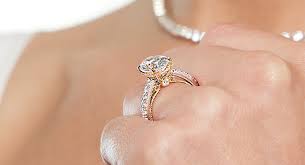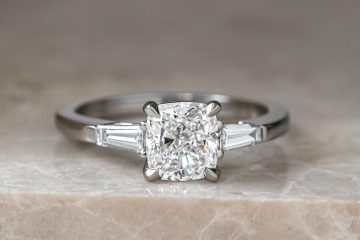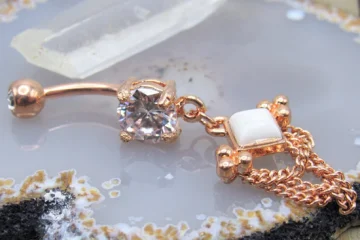Table of Contents
- Understanding Your Partner’s Style
- Setting a Budget
- Popular Engagement Ring Styles
- Understanding Diamond Qualities
- Exploring Alternative Stones
- Considering Metal Options
- Sustainability and Ethics
- Customization and Personalization
Understanding Your Partner’s Style
Choosing the perfect engagement ring starts with understanding your partner’s style. Pay attention to the type of jewelry they wear daily. Are they drawn to classic, vintage, or modern designs? Observing their preferences can offer significant clues. Some people prefer minimalistic designs, while others prefer more intricate and elaborate ones. Consulting with friends or family members who know their tastes can also be beneficial. For those looking for unique options, moissanite rings might be an intriguing alternative to traditional diamond rings, offering both beauty and affordability.
Setting a Budget
Establishing a realistic budget before delving into the vast world of engagement rings is crucial. Doing this can reduce your selections and save any unnecessary financial burden. According to NBC News, there is considerable variance in spending habits regarding engagement rings. While some individuals may adhere to the traditional guideline of allocating two to three months’ salary, others may opt for a budget that aligns with their unique personal circumstances and preferences. Remembering that the ring’s price should not be the sole factor determining its quality and significance is essential. Instead, it’s crucial to balance what you are comfortable spending and what you believe will bring joy to your partner.
Popular Engagement Ring Styles
There are several popular styles to choose from for engagement rings. Every style possesses a certain charm and attractiveness. Some of the perennial favorites include:
- Solitaire: A single diamond set alone, highlighting its beauty. This classic design centers on the main stone for people who value elegance and simplicity.
- Halo: This style features a central stone surrounded by a ring of smaller diamonds. The halo setting can make the central diamond appear more prominent and add sparkle to the ring.
- Three-Stone: Three diamonds symbolize the past, present, and future, and they are beautiful and charming.
- Vintage: Inspired by specific historical eras and intricate designs. Vintage rings often feature detailed metalwork, filigree, and milgrain, giving them a unique and romantic feel.
Understanding Diamond Qualities
When selecting a diamond, it is essential to understand the four Cs—carat, cut, clarity, and color. Each of these attributes affects the overall look and value of the diamond. The diamond’s weight is expressed in carats, with more giant stones often being more costly. Cut determines how well the diamond reflects light, influencing its brilliance and sparkle. Clarity quantifies the existence of inclusions and blemishes, which are defects that can be either internal or exterior. Lastly, color rates the diamond’s colorlessness using a letter system from D (colorless) to Z (light yellow or brown).
Exploring Alternative Stones
Diamonds might be traditional, but other stones can make stunning and unique engagement rings. Consider options like sapphires, emeralds, or moissanite for a distinctive look. These alternatives can also vary in price, often more affordable than diamonds while offering unique beauty. Sapphires, for example, come in various colors and are known for their durability. Emeralds are precious because of their striking green hue and timeless design. Moissanite, a lab-created stone, is nearly as hard as a diamond and offers exceptional fire and brilliance. Choosing an alternative stone can also be a way to reflect your partner’s unique style and personality.
Considering Metal Options
The type of metal you choose for the ring band is equally important. Each metal has its characteristics, which can affect the ring’s appearance and durability. Options include:
- Platinum: Popular for its durability and hypoallergenic properties. Platinum has a natural white sheen and is tarnish-resistant, which makes it an excellent alternative for anyone looking for something durable and low-maintenance.
- White Gold: A more affordable option that has a similar appearance to platinum. White gold is usually plated in rhodium and alloyed with other metals to increase luster and strength.
- Yellow Gold: Timeless and traditional. Since ancient times, yellow gold has been used in jewelry, giving it a comfortable, classic look. It is available in various purities, such as 14k or 18k, which affect its color and durability.
- Rose Gold: Offers a modern and romantic twist. Gold is alloyed with copper to form rose gold, which gives it a unique pinkish color. This metal has become increasingly popular for its unique and trendy appearance.
Sustainability and Ethics
More couples are prioritizing the ethics behind their engagement rings. Opting for conflict-free diamonds and recycled metals can make a significant difference. Some jewelers provide guarantees that their diamonds are sourced ethically and free from ties to conflicts or exploitation. Choosing recycled metals helps minimize the environmental impact of mining and reduces waste.
Customization and Personalization
Customizing an engagement ring can create a more personalized and meaningful piece. Many jewelers offer customization options, allowing you to choose everything from the stone to the setting. This can result in a truly one-of-a-kind ring that reflects your partner’s unique style. Customization can include adding personal touches like engraving a particular date or message inside the band or incorporating family heirlooms or stones. By creating a unique ring with the help of a jeweler, you capture your love and journey together. It can also be an excellent way to involve your partner in the process, ensuring the final piece is something they will cherish forever.




